Muriel Grossmann Devotion
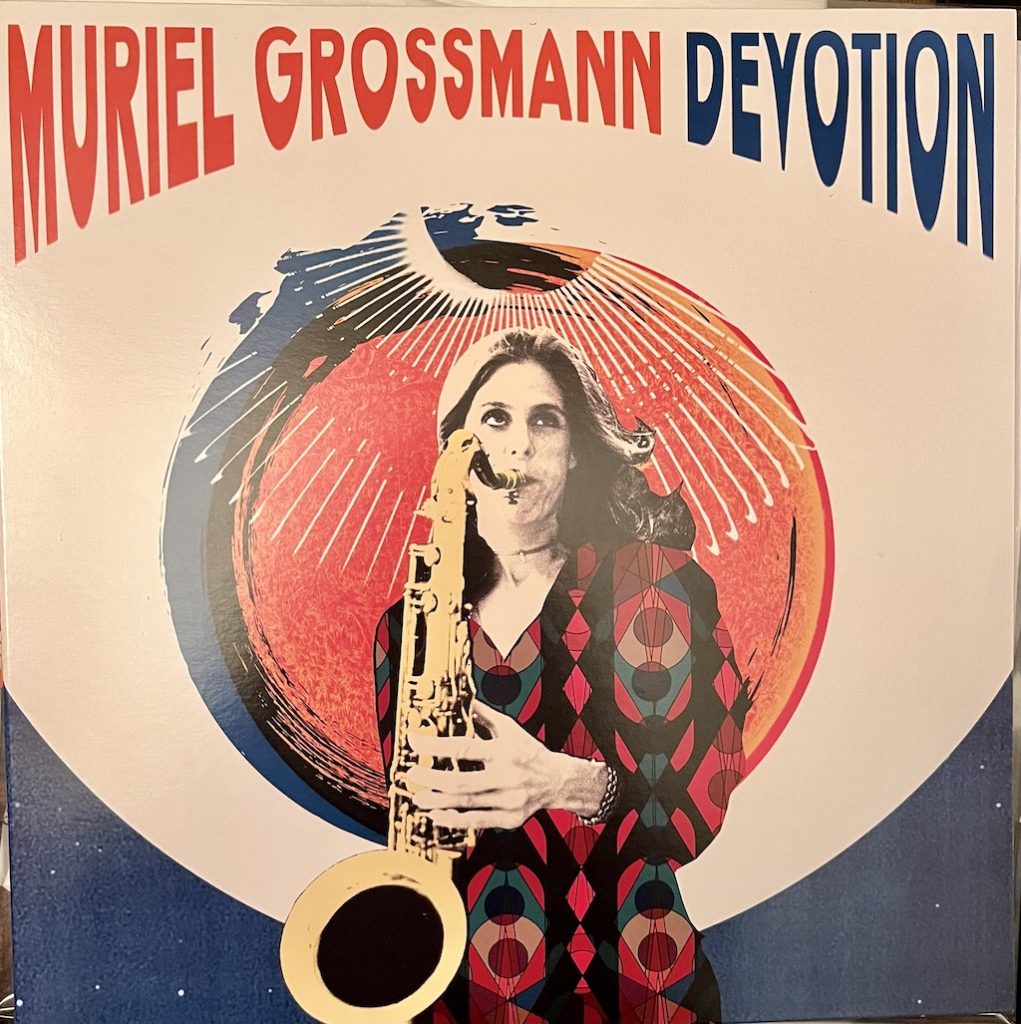
I’m a fan of Muriel Grossmann, though I have yet to meet her. She lives and works in Ibiza, which sounds like a constant party, but this woman is always working, striving, and challenging herself. Her newest release is another notch in her ascent as an important artist committed to modern spiritual jazz. The album, pressed at Third Man Records (nice clean, well-made wax), played flawlessly. This is the first album with Abel Boquera on Hammond B3.
Side I
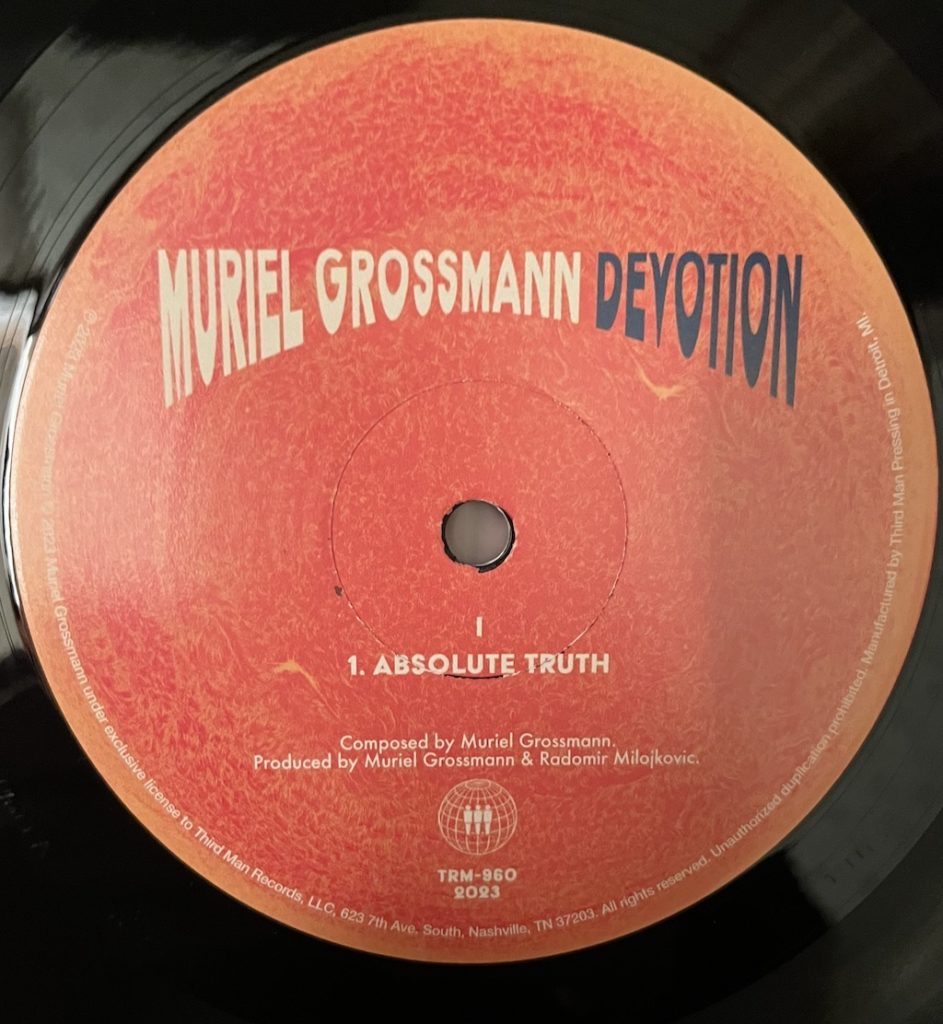
“Absolute Truth”— takes the entirety of side one, some spacy sounds which are soon joined by a regular beat on the cross stick rim shot.
The horn and organ pick up steam with that basic rhythm as the drums get more pronounced. There is an interplay between the horn and the band a few minutes in; a signature sound for this artist—without getting too “out there” or straying too far from the main theme.
The guitarist, Radomir Milojkovic, takes a moment in the sun with a classic jazz guitar solo that has a muted, rounded edge and reaches above the band’s attenuated wailing—some bluesy riffs, mixed with a fast repeat, then that magnificent B-3 sound comes to the fore—
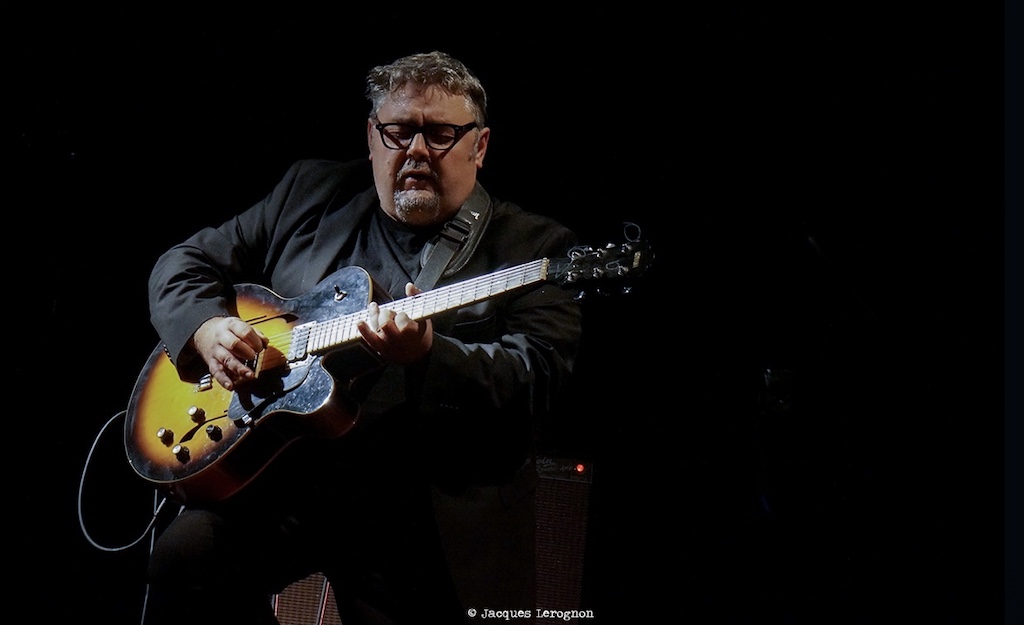
The band then slows it down to play the main theme and enters a pastoral section, with flute (Ms. Grossmann’s first instrument), combined with horn, as the drums and organ build behind her. Her flute playing is trilling as the bass, organ and drums carry the whole assemblage forward. You can hear some nice rim shots, then a discordant passage where various instruments flare in and out of the mix. This becomes a murmuring of things to come, followed by a transition back to that struck cross stick setting time. It’s that beat again, though it quickens, and the theme is now fast paced, driving more forcefully. Against this, the horn leads in an almost triumphant way.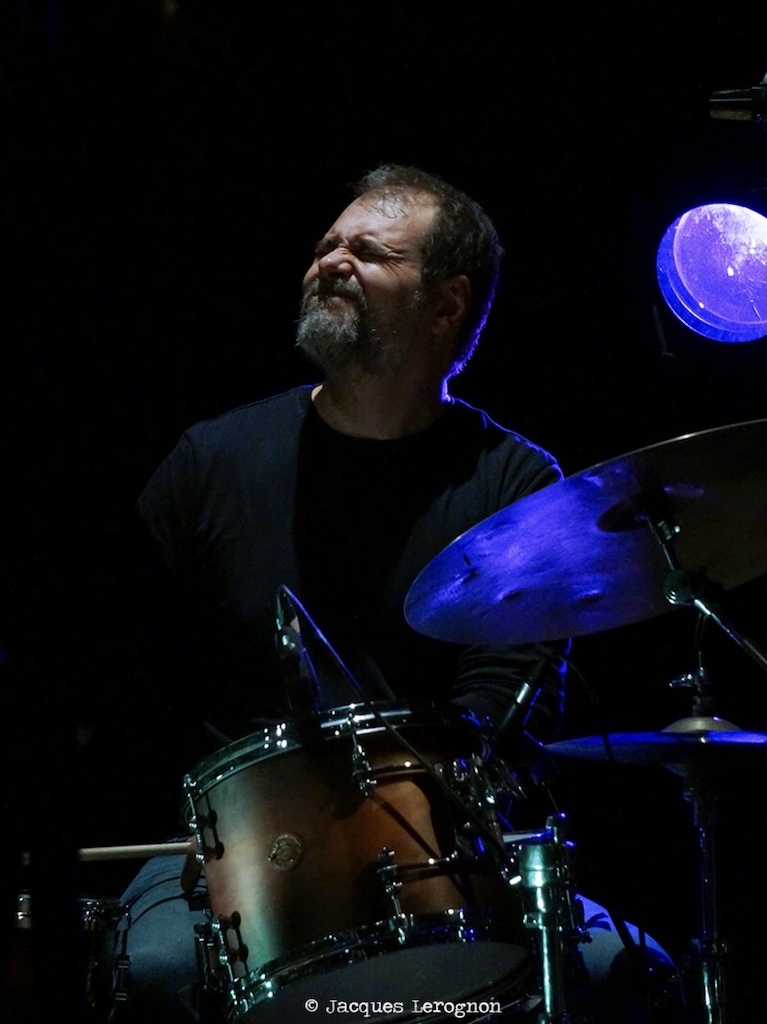
Side II

Consists of two tracks. The first, “Calm,” is almost like heavy rock but played in an instrumental mode that is lyrical rather than distorted. This composition could probably be a pop hit if someone lyricized it—there’s a Western “twang” to the guitar—the B-3 swells, and MG’s horn crowns the moment with these bluesy riffs that bring jazz horn to what could be a native American beat. After an interlude, the guitar takes the lead, cymbals smash, the B-3 weighs in with some nice fills against some very deft fretwork on the guitar.
We return to the original theme, something that satisfies immensely. With no insult intended I pose the rhetorical question—what if Deep Purple were a jazz band?
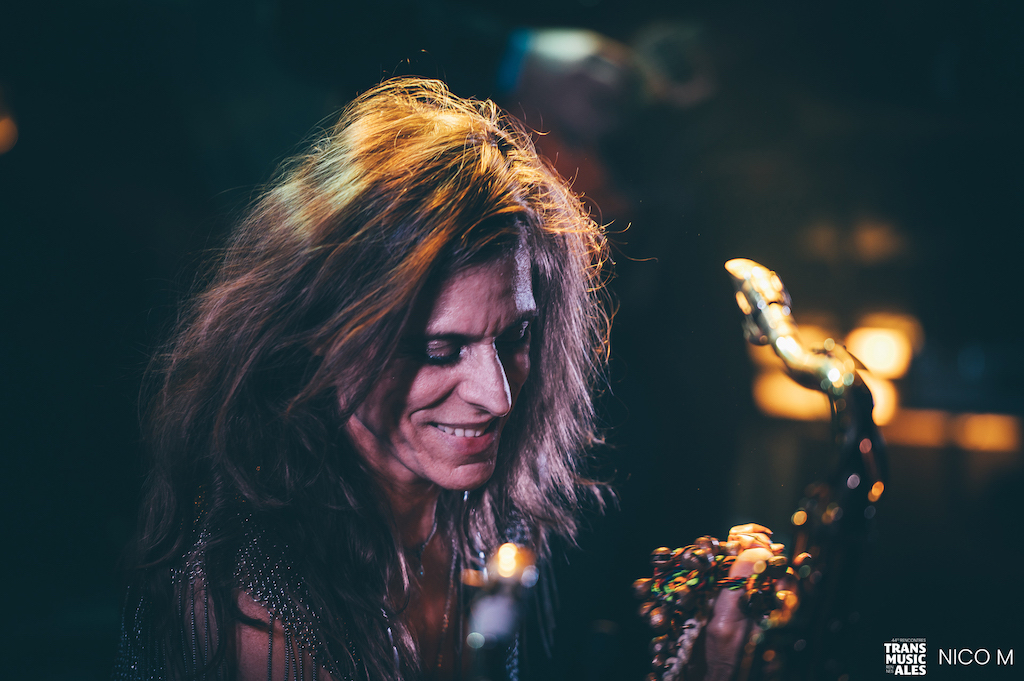
The second track on this side, entitled “Care,” brings us an entirely different take on same instruments, but instead of building on a chunky underlying riff, this is almost top down, horn descending, and some splashy work on the big Hammond, reminding you of why this was such a choice instrument and remains so relevant today. The harmonics of the tone wheels give you something virtually no other instrument can—percussive but rich and warm at the same time. The track seems to wrap with pinpoint precision.
But then, the horn returns to bring us home, and now, the band is fully engaged. MG is wailing—nothing too cacophonous—more a joyous bout of what a tenor can do at full range, with a more aggressive approach to the instrument. Our guitarist gets another moment or two —playing a line that could be a horn part, except for the tonality and the occasional fast chord strike to frame his lead. The B-3 pipes in and the drummer, Uros Stamenkovic, is working overtime behind it all. We return to the main theme to close out the piece. (Check out the kick drum here). The breakdown at the end is very nice.
Side III
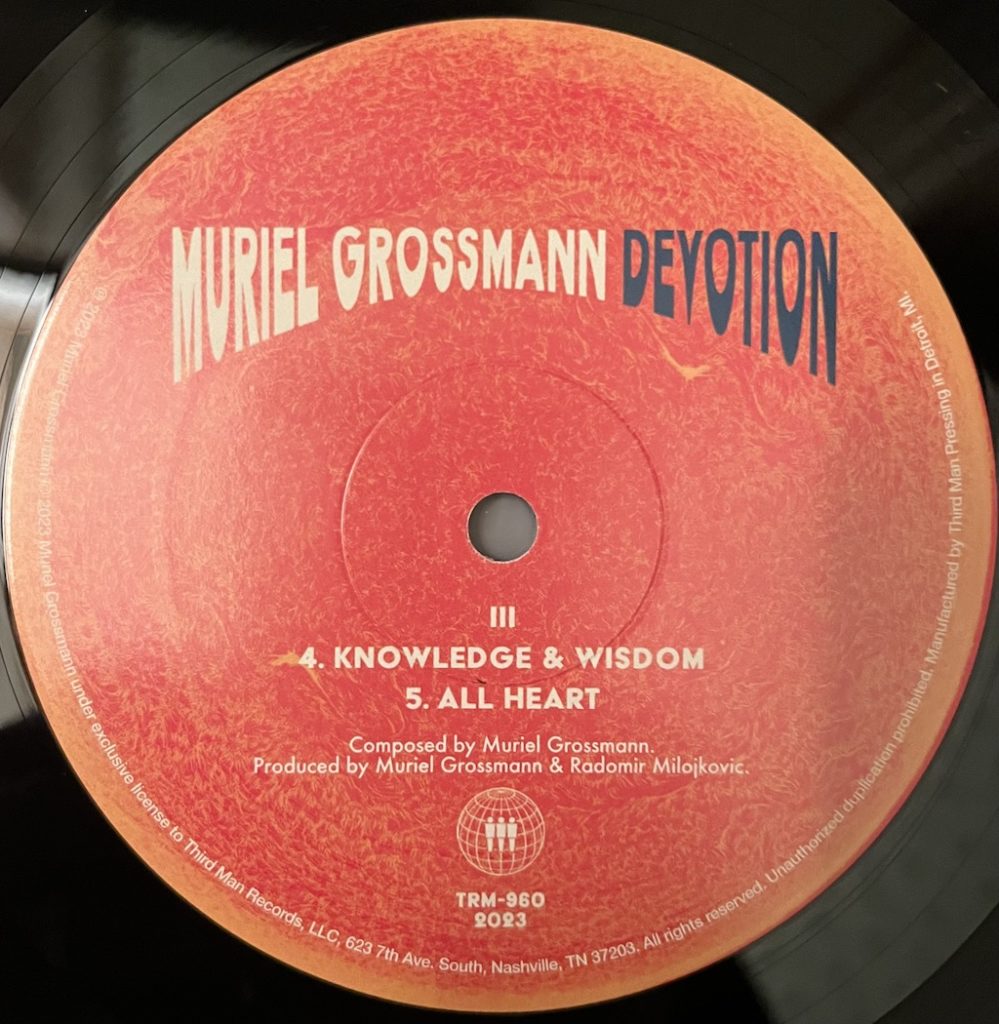
“Knowledge & Wisdom” starts the side—a mellow loping intro mixing various woodwinds, the band taking an easy pace, with some good drum work. The tautness of the drum skins is evident here, setting pace for the soprano sax, which hits different intervals up and down the scale before briefly delving into minor keys. A few spacey sounds intervene before the guitar takes over; again, I’m struck by the more Western sound of the guitar as the sax goes into a more Eastern motif to bring the piece to a finish.
Next up, “All Heart,” which begins with bass and horns, drums and metallic percussive bits taking a dominant role. This is reminiscent of some harder bop sounds, and off we go in a flight of guitar fancy; that mellow, filigreed sound, which is classic, but the contrasts are very modern. This track has some strong forward movement that is all about Milojkovic’s technique. The guitar work is bookended by MG’s appearance on horn, carrying the refrain deeper and into unexplored territory. Her playing here is terrific—fluent, adventurous and at times aggressive. She accents with flourishes that border on multi-phony and dips deep into the lower registers of the instrument while the bass and drums carry the pace. This is one of the great horn parts on this album. The B-3 returns and leads with quickness, horn returning as if responding, and the piece moves to an interplay between the horn and band. This track percolates with energy.
Side IV
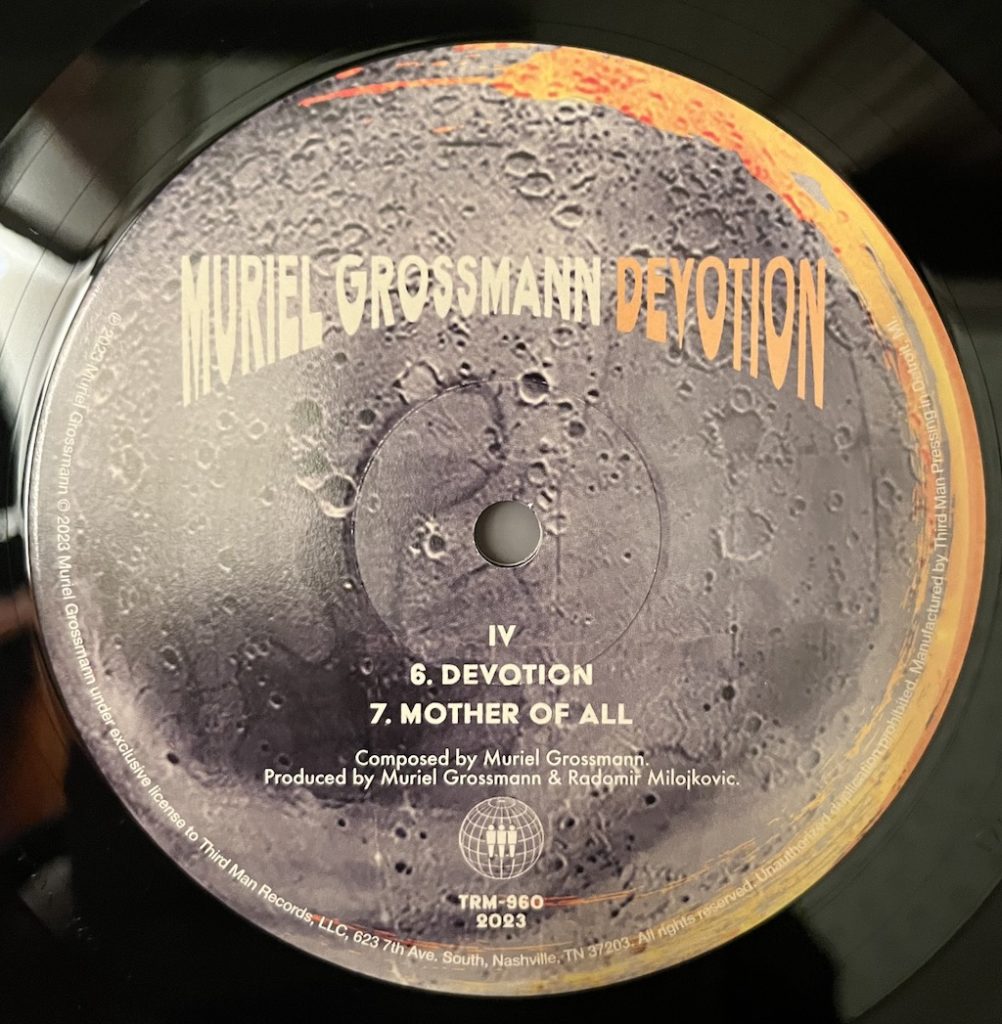
The title track, “Devotion,” starts with what sounds like piccolo (but MG informed me it is an overtone flute) and a drum rat-tat-tat characteristic of a military band before transitioning into what sounds like steel slide guitar, to morph into a lovely horn lead.
The melody here is marvelous; warm and enveloping, setting up a framework for what follows: the band interweaves as the backdrop for the horn. The B-3 goes all percussive, making full use of its range and harmonics with a blues-based right hand, Leslie spinning up and those major/minor ascents and descents we hear from accomplished Hammond players.
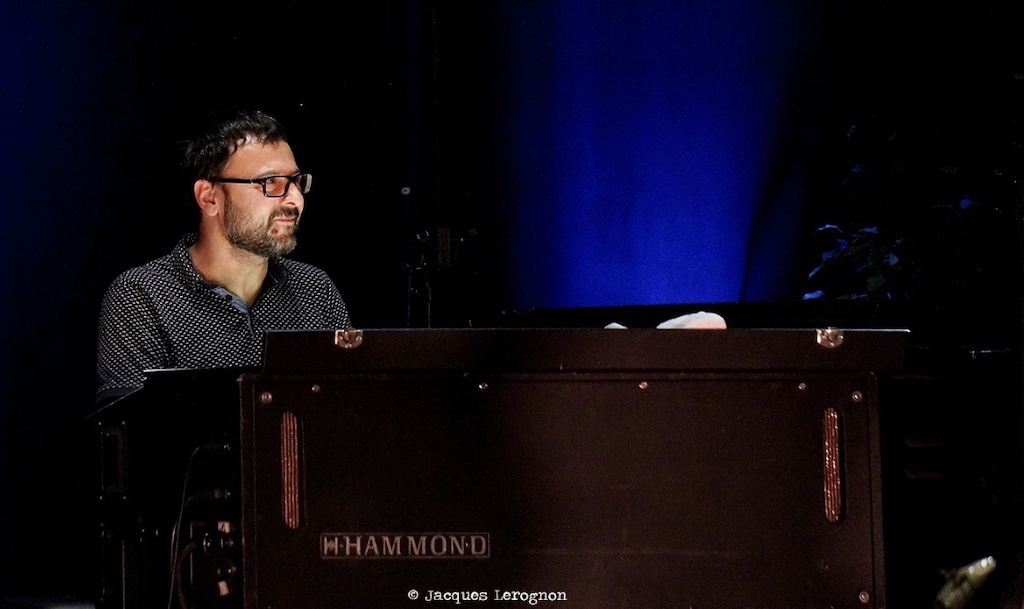
The horn brings us back to theme, rim shots and that lovely melodic lead line, which the guitar takes over, accompanied by flute. This has a pastoral aspect, unlike the military march sounds that open the piece, which closes in susurrations and the rat-tat-tat and fife sounds that opened the track. Pretty fascinating listen, this track.
The album closes with “Mother of All,” which may be one of the more “spiritual” tracks on the album—it is horn dominant, and has the earmarks of a more exploratory composition, touching on the familiar and exotic. The horn excursions are very satisfying.
The guitar solo fits “just so,” and complements the introductory section, leading the band with intricate, jazzy high-low, arpeggiated triads before broadening into full scales, as the horn returns, very “rooted” and foundational sounding, little multi-phonic squawks on the bottom (not to the degree of Pharoah Sanders, but just an accent). MG has complete mastery here and it shows. I’d love to hear her in a small club; this record may be the next best thing. Melodic, searing at times, but her technical proficiency does not overwhelm her devotion to the music. Very satisfying and brings a close to what may be one of her best albums yet.
I’ve followed Ms. Grossmann for a while now and as she and her band continue to advance, musically and in technical proficiency, they never seem to lose sight of the theme.
I asked Ms. Grossmann for her perspective on the album:
“I enjoy this album thoroughly, for me this is a great record, very well played, the compositions are opening a lot of space for different kind of concepts, textures and atmospheres, it travels far and wide…”.
This album is accessible and a great introduction to the current state of so-called “spiritual” jazz. The quality of the pressing and the quiet vinyl surfaces only add to the joy of listening to this album. A winner.
Bill Hart
Austin, Tx.
June, 2024
All photos as credited, courtesy Muriel Grossmann
Leave a Reply
You must be logged in to post a comment.